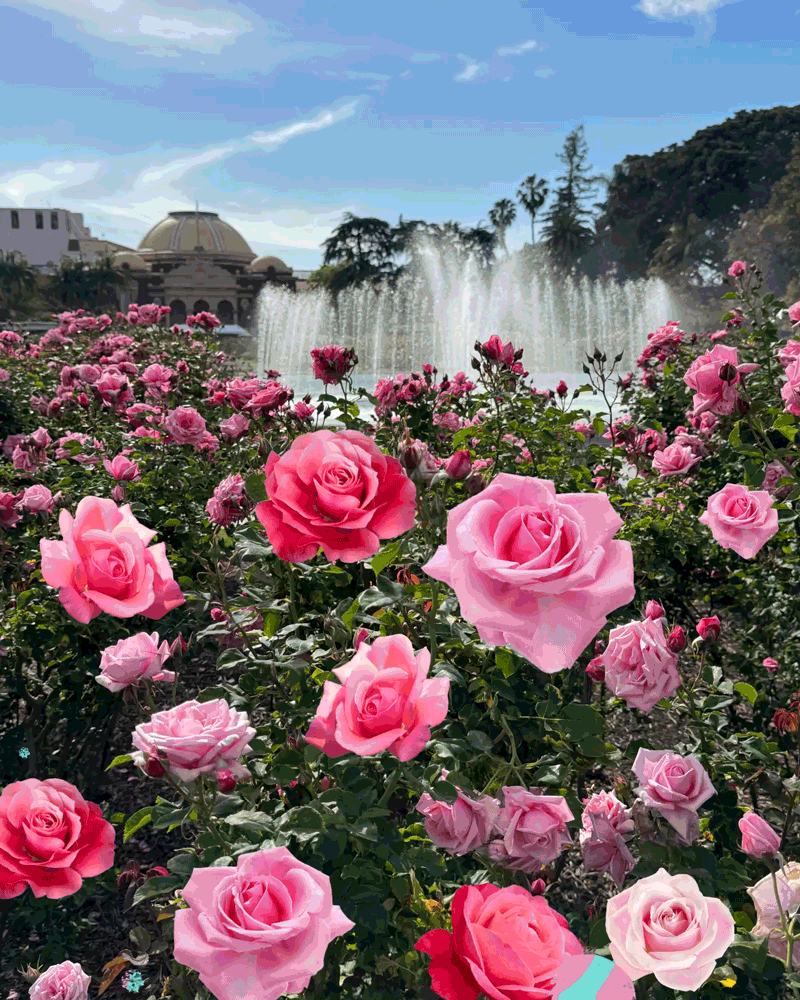Gardening : Raising the Productivity of Your Roses
- Share via
Roses are remarkably versatile plants, which must account for some of their tremendous popularity. Witness the examples pictured here. James Sefton grows roses so huge he needs a ladder to cut them, and these bushes produce so many flowers (as many as 200 per bush per year) that every vase at a Pier 1 couldn’t hold them.
Jamie Wolf also manages to fill the house with roses, but she grows hers compactly, on a rooftop deck, three to a barrel.
Wolf, a writer, also grows roses in the garden, but she doesn’t cut those for bouquets; they are left to adorn the garden. On her roof, it’s a different story. There she found all the room she needed for a cutting garden, though setting it up wasn’t as easy as it might look, because first the roof was specially tarred and then decked over.
Keeping plants watered is the major container-gardening chore, but not in this case. Hidden under the decking are two water lines that feed a multitude of small tubes (the kind used for drip-irrigation systems) that lead to the oak barrels. The deck planks that hide the feeder system are only screwed down, so they can be taken up for maintenance. The small tubes come up through the drainage hole in the bottom of the barrel and then make a circle so all three plants get equal water. It takes about 40 minutes to water all 23 of the barrels, but all one has to do is turn the system on and then off 40 minutes later.
Wolf thinks that perhaps little soakers on the ends of the small tubes might work just as well, and that they would require less maintenance. As it is, the tiny laser-cut drip holes in the tubing become clogged in time and she has resorted to replacing all of the tubing in the barrels every six months, just to make sure that none clogs, causing the bushes to die.
She plants annuals such as lobelia, Chrysanthemum paludosum and sweet alyssum in the barrels that are most visible. Though the roses can’t be seen from the garden, they can be seen, peeking over the railing, from inside the house.
Because they are container-bound and packed in pretty tightly (two or three in each barrel), the roses are fertilized lightly every three weeks during their growing and flowering season. For her efforts, Wolf gets bushel baskets full of flowers for the house.
During that first strong spring bloom, James Sefton, a professor of history at Cal State Northridge, has about 2,000 flowers at one time in his rose garden. The garden is in a smallish front yard, and it is the size of the plants that account for this prodigious production. “I prefer to be among my roses, not to look down on them,” he says, and among them he is, surrounded by head-high bushes.
Pruning accounts for the roses’ height--Sefton doesn’t follow the conventional advice, at least not categorically. He sees each rose as an individual and prunes accordingly.
He also recommends pruning “gently.” If a rose has seven or eight healthy canes, he keeps all of them, though the conventional advice is to keep only three or four. If only a single cane is alive and well, Sefton doesn’t cut it back, but leaves it long and tall. He saved an old bush that came with the property this way. If he had cut it back, it probably would have died. Roses have a hard time sprouting new growth through the thick bark that is down low on old canes.
Sefton doesn’t cut out old gnarly canes either, unless there are plenty of younger ones. They’re worth keeping just for their leaves, which manufacture food for the flowers. Nor does he worry about “crossing” canes (branches growing in opposite directions) if they are helping the bush.
In general, Sefton prunes the hybrid teas to about chest-height and the floribundas just a tad lower. Some of the bushes are so large it takes an hour or more to prune just one, and it takes about 5 1/2 days to prune the garden, doing 10 a day.
Sefton doesn’t fertilize the roses all that much, so that isn’t his secret. He gives them a long-lasting systemic at the beginning of the season, some liquid fertilizer later on and another dose of systemic in summer. However, “the roses do not go begging for water,” he adds.
That astounding growth and all those flowers have mostly to do with how the roses are pruned.
“Of course, by the end of summer, you must be prepared to have a jungle for a rose garden,” he says.
But what a small price to pay.






